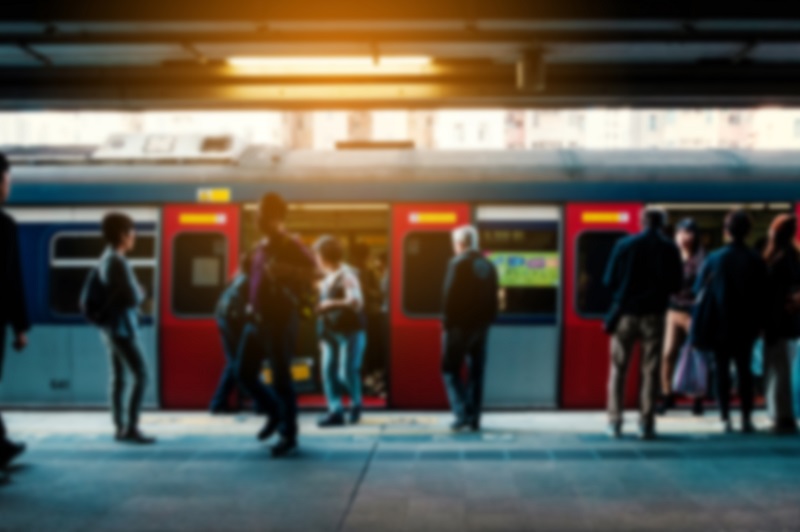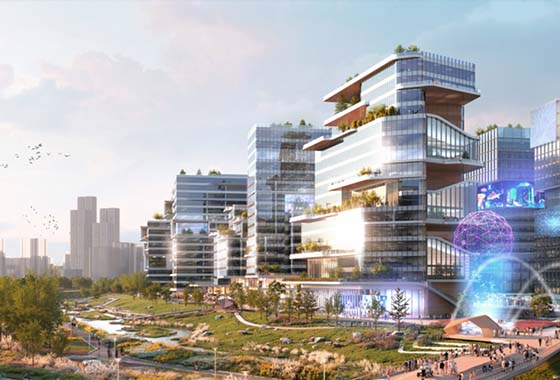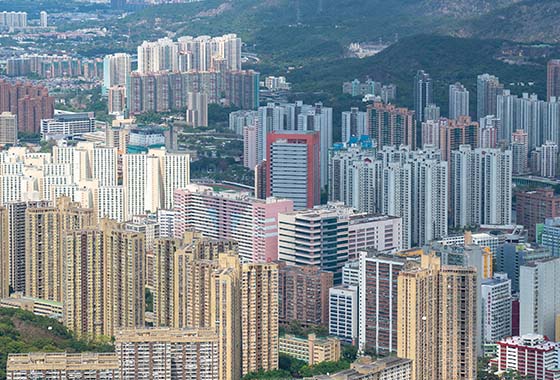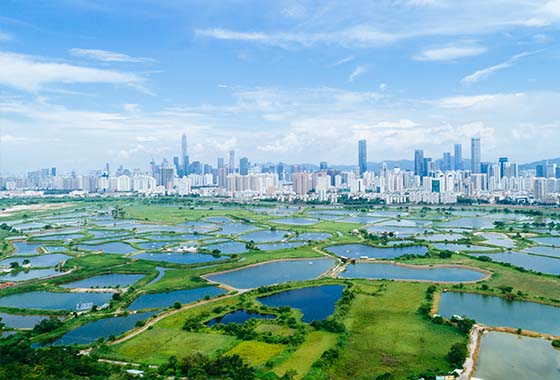Solution to scarcity of land – farsighted planning and prioritizing basic infrastructure
This article appeared originally in the CHINADAILY on 31 August, 2021.
Authors: Ryan Ip, Head of Land and Housing Research, and Jacqueline Hui, Researcher at Our Hong Kong Foundation

Overlooking the importance of a healthy diet can cause artery blockage, leading to heart disease. In the same vein, if transport infrastructure is not given due consideration in town planning, gridlock can be caused, limiting the potential of land development. Mundane as it may seem, basic infrastructure is of paramount importance to a metropolis. In the New Territories, the development potential is restricted by inadequate infrastructure, particularly the remote and undeveloped outskirts. This explains why the NT cannot accommodate most of the population despite covering almost 90 percent of Hong Kong’s area. Only half of Hong Kong’s population live in the NT, while the other half live in the relatively well-planned urban areas which account for only 10 percent of the total land area. To understand the infrastructure problem in the NT, the easiest way is to start with transportation.
Inadequate infrastructure as a result of demand-driven planning
Many NT dwellers travel to urban areas for work every day, beset by traffic jams due to saturated road and railway transportation. This is exemplified by the mass transit railway, where the loading has already exceeded 100 percent for the Tsuen Wan Line, Tseung Kwan O Line, Kwun Tong Line, Island Line and West Rail Line (calculated based on a passenger density of four persons per square meter). The Tung Chung Line and East Rail Line are close to saturation as well. Passengers have to wait for a few trains for boarding and countless citizens are discontent at having to spend so much time commuting every day.
The overloaded transportation network is attributed to the demand-driven planning of the government which only starts designing new roads or railways when the population is large enough. The Hung Shui Kiu New Development Area is a vivid example. The first batch of residents will move into this area in 2024, but Hung Shui Kiu MTR Station will only be completed in 2030 at the earliest. While such inconvenience will undoubtedly frustrate residents, it is more noteworthy that the connectivity of a district affects its land use and pace of development. Although Hung Shui Kiu is positioned as an economic and cultural hub, the ambition is hard to be realized given the poor transportation network. Hence, to develop the NT, one of the prerequisites is to prioritize infrastructure and timely construct more when necessary.
Crisscrossing network to alleviate congestion
In line with the New Development Areas and new towns, Our Hong Kong Foundation proposes developing nine potential development areas in the NT to form a massive development belt. It is our conviction that timely expansion of the transportation network is vital to satisfy the needs of new residents.
The roads planned and confirmed to be constructed by the government can enhance connectivity for the Lantau Tomorrow Vision, linking NT Northwest, Hong Kong Island, Kau Yi Chau Artificial Islands and Lantau Southeast, effectively diverting traffic from Tuen Mun Road. Without this network, it would be a formidable task trying to conduct large-scale development in the NT.
Meanwhile, the government mentioned the need to construct the North South Corridor in Hong Kong 2030+. Yet, there is currently no preliminary suggestion of any major road or railway. In face of the incessantly increasing demand for transportation, OHKF proposes two major roads worthy of consideration: the first one connects Lam Tsuen and Lam Tei, horizontally passing through several New Development Areas and connecting checkpoints; the second one links up Fanling and Mei Foo, vertically diverting traffic from NT Northeast. These two roads would serve as two new arteries for Hong Kong, relieving traffic congestion across districts.
Railway extension to enhance NT position
A new railway network under the Lantau Tomorrow Vision is equally cardinal. The railways planned and confirmed to be constructed by the government along the west coast, between Kau Yi Chau and Sunny Bay, between Kau Yi Chau and Kowloon, and between Kau Yi Chau and Hong Kong Island can facilitate commuting between existing commercial districts and the NT, leading to the creation of more economic hubs in the NT.
In addition, OHKF proposes four railways for further studying, three of which are cross-border routes reaching Shenzhen. The first one connects Hung Shui Kiu and Shenzhen, reinforcing the position of Hung Shui Kiu as a regional hub; the second one extends the Northern Link northwards to reach the Innovation and Technology Park in the Lok Ma Chau Loop and Huanggang Station in Shenzhen; the third one extends the Northern Link to the east, reaching Liantang / Heung Yuen Wai Port with Man Kam To and Kong Nga Po as intermediate stops.
Urbanization of the NT allows more citizens to live and work there, contributing to a huge demand for regional and local transportation services. The new towns in NT North alone (Queen’s Hill, Hung Lung Hang, Ta Kwu Ling and Ping Che inclusive) will have over 200,000 citizens moving in. As the East Rail Line and West Rail Line are near full capacity, it is hard to meet future needs by simply extending them. Therefore, OHKF suggests constructing a third railway that runs through the NT and urban areas from Liantang / Heung Yuen Wai, passing Queen’s Hill, Lam Tsuen, Tai Wai and Mei Foo. This north-south railway is worthy of consideration.
Infrastructure return rate cannot reflect reality
Besides planning, how to build transportation infrastructure timely is equally important. When the government assesses the cost-effectiveness of new ancillary transportation, the economic internal rate of return is calculated to determine whether it is worthy of investment. However, the return rate mainly covers the reduced time of travelling, excluding other positive effects such as increased economic activities, enhanced development density and profits from land sale. As a result, the return of transportation infrastructure has long been underestimated. For instance, the return rate of the South Island Line was evaluated at merely 5.8 percent in 2011. When the construction experienced a cost overrun with the final cost reaching HK$16.9 billion (US$2.17 billion), a lot of people were concerned that the railway could not balance the books. However, it turned out that the revenue of HK$16.86 billion generated by selling the land of a former driving school could almost cover the whole construction cost. In fact, the increase in land premium can reflect the potential economic benefits brought by new infrastructure.
Irrefutably, railway safety issues and cost overruns are a common occurrence lately. It is understandable that citizens have lost faith in infrastructure projects, often criticizing them as “white elephants”. That said, the transportation network of a city serves as its veins, an irreplaceable asset to ensure effective operation. The government ought to monitor the cost and supervise construction quality, taking more extensive benefits into consideration when assessing the return rate so that the public can fully understand the potential merits derived from transportation infrastructure.



